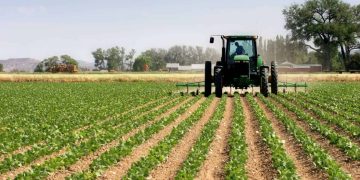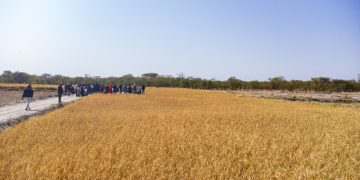
Treasury says drought conditions often threaten the fiscus budget, resulting in authorities spending an average of N$500 million on drought relief programmes in an effort to cushion the affected communities from the severe effects.
The Minister of Finance and Public Enterprises Iipumbu Shiimi said the impacts of droughts and climate change on economic growth in Namibia are multifaceted and touch various sectors of the economy.
“On average, the Namibian Government spends around N$500 million on drought relief programmes, placing pressure on our fiscus. More worrisome is that the effects of climate change are not likely to ease up,” Shiimi said during a gala dinner where N$88.3 million Eba Grants were handed to the Environmental Investment Fund (EIF) to fight climate change.
According to the Food and Agriculture Organisation report released in April 2023, there is a high probability of El Niño returning in 2023, following three years of La Niña.
“This means more budget allocation for disaster relief programmes to be allocated during the next mid-term expenditure framework to mitigate disaster-related impacts. Noting the intensity of such occurrences, there is a need to start mobilising development partners and coordinate investment efforts to adequately address this looming cloud,” said Shiimi.
Namibia had suffered seven severe droughts which were declared a state of emergency between 1992 and 2019, with the likelihood of experiencing a recurrence to affect hundreds of thousands of people including farmers.
“During the 2019 drought spell, crop production under rain-fed conditions decreased by 48% below average and pearl millet decreased by an average 41%. This had a major impact on the GDP and overall economic growth of the country. Research in Namibia suggests that over 20 years, annual losses to the Namibian economy could be up to 6% of GDP due to the impact that climate change will have on natural resources alone.”
“Land productivity per hectare is projected to decrease by up to 42% of its current value by 2050, and up to 59% by 2080, with the largest reductions occurring in the central regions of Namibia. To be specific in terms of the livestock sector, in the next 70 years, it is possible that there may be an income decline of approximately 1% per annum that would result in production and growth losses of the country’s net income,” he stressed while reassuring the ministry’s support of EIF.
Signifying the support, Shiimi said, the Ministry finalised the Development Finance Assessment that resulted in the Integrated National Finance Framework, including the Digital Finance Ecosystem Assessment and an SDG Investor Map have been developed to accelerate the implementation of SDGs with the support of the private sector.
The Integrated Financing Strategy is expected to strengthen domestic revenue mobilisation, unlock the potential of green and blue bonds and boost private sector investment in sustainable projects. On the other hand, the Integrated National Finance Framework will guide the resource mobilisation efforts and leverage all sources of finance for the implementation of its medium and long-term National Development Plans.
“The Integrated National Finance Framework has proved to be effective as it has guided EIF to establish the SDG Namibia One, which is a green hydrogen investment platform and has already raised a N$760 million grant in 2023. The same framework is well placed to support resource mobilisation for drought relief and climate related challenges,” he emphasised.
The EIF is critical in sourcing funds and administering climate programmes in Namibia. To date, the Fund attracted and mobilised more than N$3 billion mostly from multilateral and developmental funding institutions and partners.
Through such funding more than 240,256 hectares of land were put under conservation, in addition, the Fund facilitated and disbursed 258 community-based and individual grants valued at more than N$2.3 billion.
This resulted in the creation of 950 employment opportunities mostly rural based and retrofitted 169 boreholes that benefited more than 77,000 people.
Furthermore, EIF attracted N$820 million for a concessional Green Credit Line with participating commercial banks from Agence Française de Développement (AFD), under the Sustainable Utilisation of Natural Resources and Energy Financing (SUNREF) project in Namibia.













